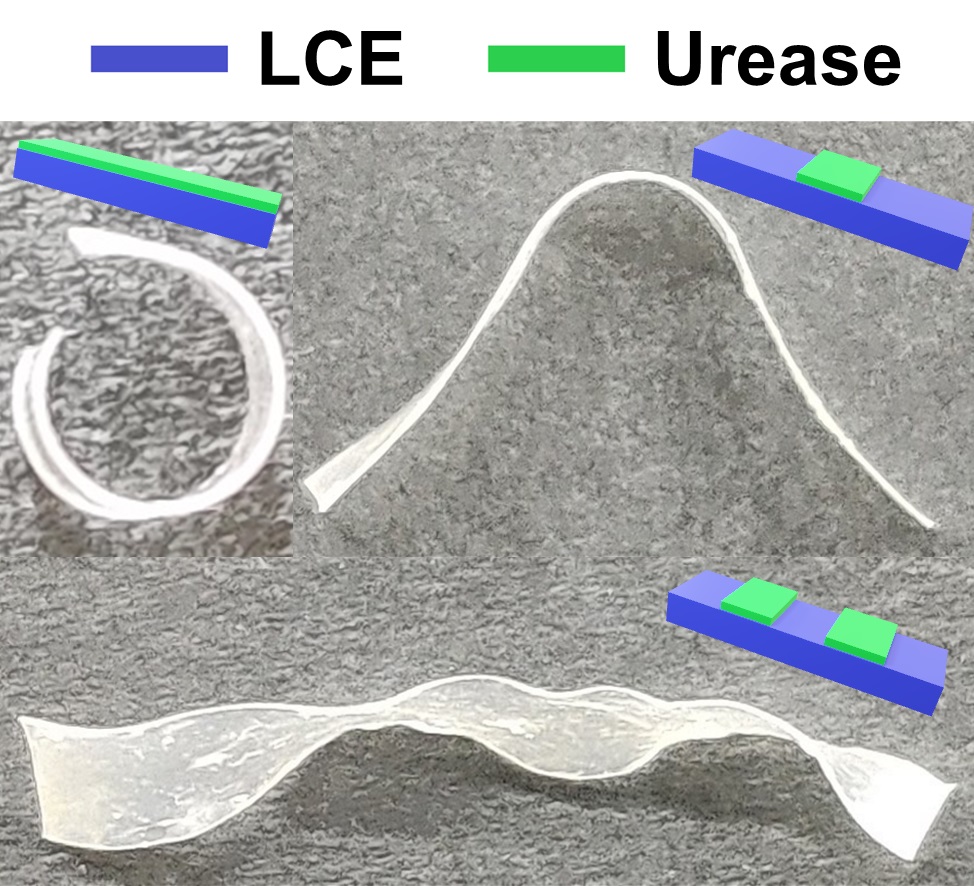(405h) Biocatalytic 3D Actuation in Liquid Crystal Elastomers Via Enzyme Patterning
AIChE Annual Meeting
2022
2022 Annual Meeting
Materials Engineering and Sciences Division
Polymer Networks and Gels I
Tuesday, November 15, 2022 - 5:30pm to 5:45pm
Liquid crystal elastomers (LCEs) are stimuli-responsive materials that undergo large shape transformations after undergoing an order-disorder transition. While shape reconfigurations in LCEs are predominantly triggered by heat, there is a considerable interest in developing highly specific triggers that work at room temperature. In this presentation, we report the fabrication of biocatalytic LCEs that respond to the presence of urea by covalently immobilizing urease within chemically responsive LCE networks. The hydrogen-bonded LCEs developed in this work exhibited contractile strains of up to 36% when exposed to a base. Notably, the generation of ammonia by immobilized urease triggered a disruption in the supramolecular network and a large reduction of liquid crystalline order in the films when the LCEs were exposed to urea. This reduction in order was macroscopically translated into a strain response that could be modulated by changing the concentration of urea or exposure time to the substrate. Local control of the mechanical response of the LCE was realized by spatially patterning the enzyme on the surface of the films. Subsequent exposure of enzymatically patterned LCE to urea triggered 3D shape transformations into a curl, arch, or accordion-like structure, depending on the motif patterned on the film surface. Furthermore, we showed that the presence of salt was critical to prevent bridging of the network by the presence of ammonium ions, thereby enabling such macroscopic 3D shape changes. The large actuation potential of LCEs and the ability to translate the biocatalytic activity of enzymes to macroscopic 3D shape transformations could enable use in applications ranging from cell culture, medicine, or anti-fouling.


